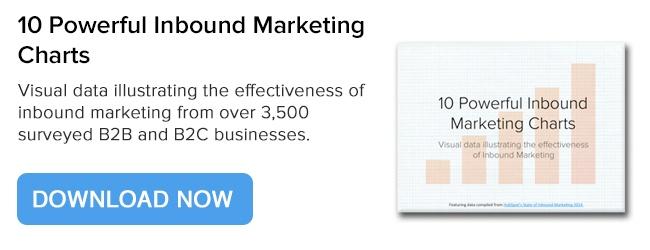3 Building Blocks For An Effective Marketing Strategy
By Jaco Grobbelaar on Wed, May 18, 2016 @ 12:30 PM


Your eventual success at achieving your marketing objectives depends primarily on having a solid marketing strategy. In addition, you must have a consistent commitment to follow through with your strategy.
So far, so good, right? In fact, this is fairly straight foward and basic.
The problem is that, for many marketers, there is the tendency to start the process backwards.
A 3-Part Marketing Strategy to Achieve Your Objectives
In other words, most marketers simply start with their proposed budget and use that to dictate what they can or can't do with marketing tactics. This is not only short-sighted, but it comes from holding the wrong perspective.
A more effective approach to is to start with your actual marketing objectives.
This is analogous to planning a journey. If you want to go from San Francisco to Boston you wouldn't simply look at your bank account and say, "Well, if we fly, we can only get as far as Kansas City, but that might be close enough, you think?"
Of course not!
No, you would first determine where you want to go (like Boston), how you can best get there efficiently and cost-effectively (bus? train? rental car?), and then you would plan and create your budget to make it happen.
But, without clear objectives, it could be a waste of resources and money to simply head off with no clear destination in mind.
Three Steps of an Effective Marketing Strategy
One approach is to create a strategy built on three legs, or three perspectives. A successful strategy always takes into consideration the objectives being sought, the actions needed to achieve those objectives, and the resources needed to support those actions. Your marketing strategy should be no different.
Here, then, are the three key steps to achieving your marketing objectives:
1. Your Marketing Objectives Plan
2. Your Marketing Action Plan
Included in this action plan step should be a production calendar with periodic progress meetings and updates, etc. One approach that is often employed with this step is what is known as S.M.A.R.T. goals. The acronym originally stands for goals that are: Specific, Measurable, Assignable, Realistic, and Time-related.
3. Your Marketing Budget Plan
Bring it Together in a Killer Marketing Strategy Plan
Ultimately, this can be seen as a three-stage, or three part, marketing plan.
Regardless of what actual marketing tools or tactics you employ, it makes sense to start with clear objectives first. Having an action plan in place for achieving these objectives is necessary in order to see your overall plan to completion. And, once these plans are established, you can create the budget plan.
Achieving these objectives with your marketing strategy takes time. If you are engaged in content, or inbound, marketing it won't happen with a few blog posts or great ebook. People will need to consume your content for a while before they contact you. But without your content compelling them to contact you, your goals may never be met.
Content and inbound marketing work day in and day out. Once you post a blog article or upload a Slideshare piece, it is always there, working to educate and compel people to become leads. And when they do come to you, they are educated, informed, and much more likely to make the decision to buy.
You Can Have a Partner in Your Marketing Planning
A better approach for creating and publishing and effective business blog is to get outside help. Digital marketing agencies, such as BroadVision Marketing, can offer expertise and tools that the typical business owner or marketing manager may not have.
It often helps to have an professional marketer's perspective to assess your content marketing strategy. Acquiring the insights and assessment of a third-party professional can be an investment that will bring a quantifiable return.
BroadVision Marketing offers all this and more. Click the button below to get your free copy of 10 Powerful Inbound Marketing Charts to help you make an informed decision, or call BroadVision Marketing at 707-799-1238.
You May Also Like
These Related Stories

3 Elements Of A Killer Marketing Strategy [Tips]

3 Keys To Achieve Your Content Marketing Objectives

.png?width=302&height=75&name=BVM%20Logo%20-%20transparent%20(1).png)


No Comments Yet
Let us know what you think